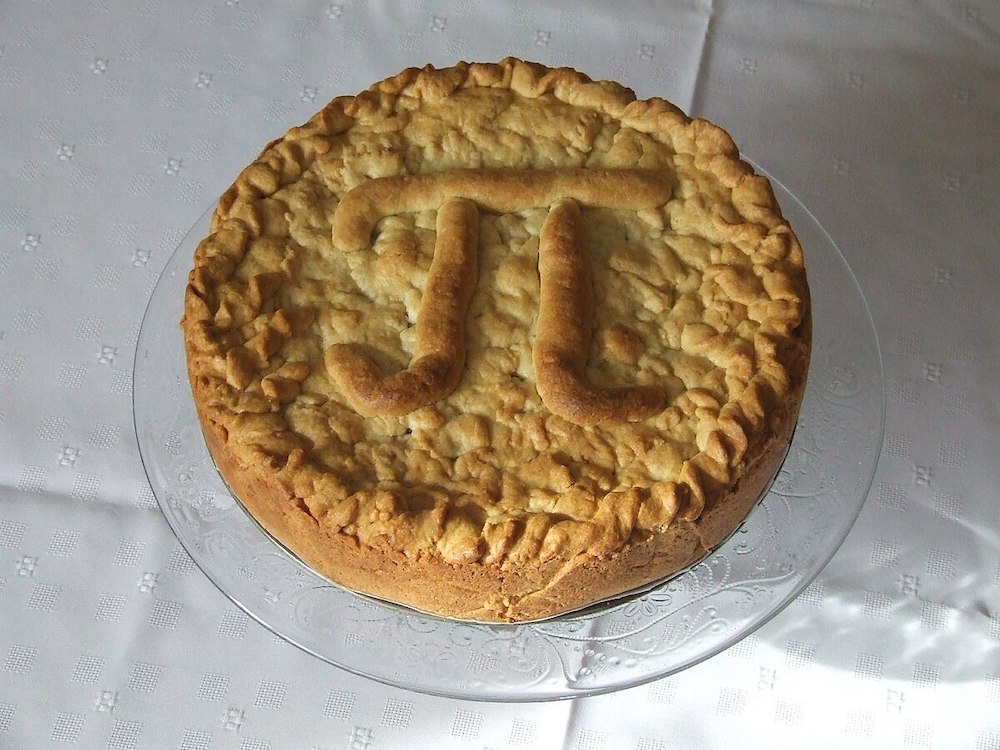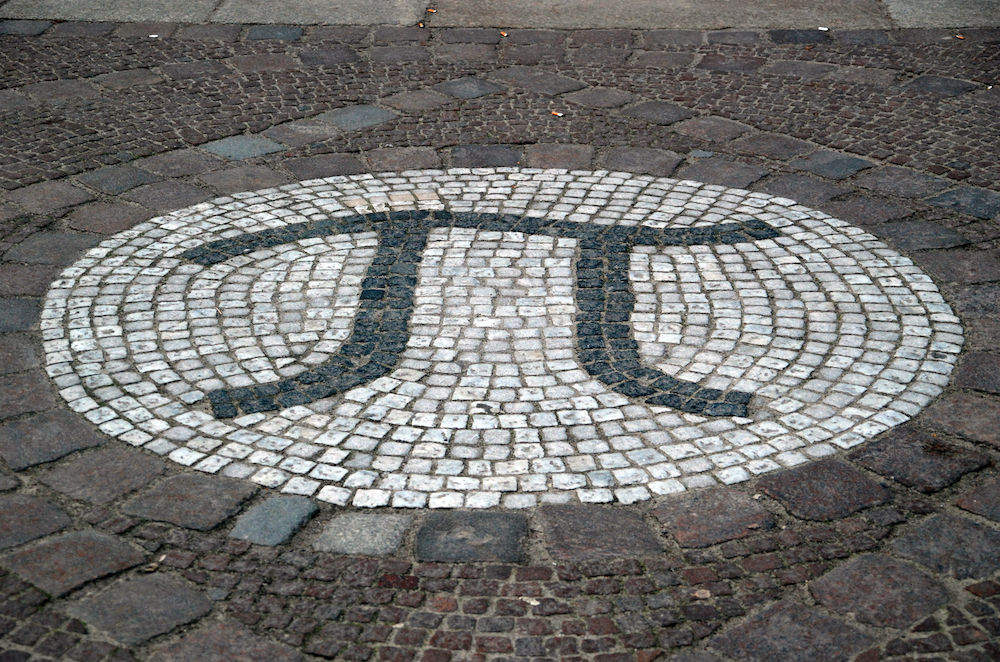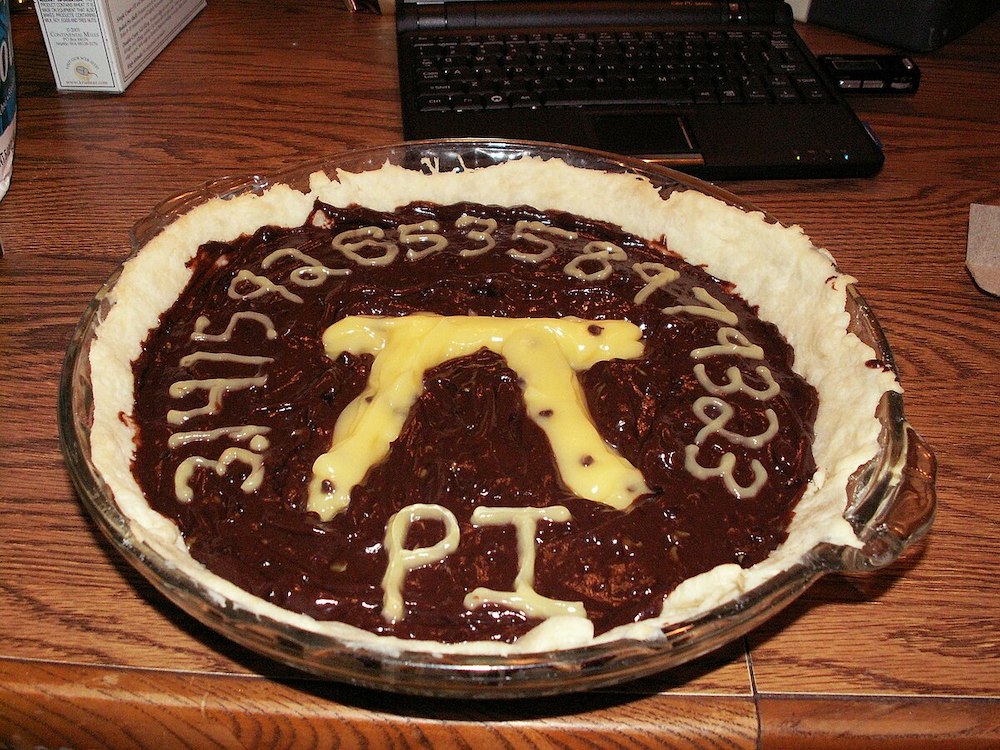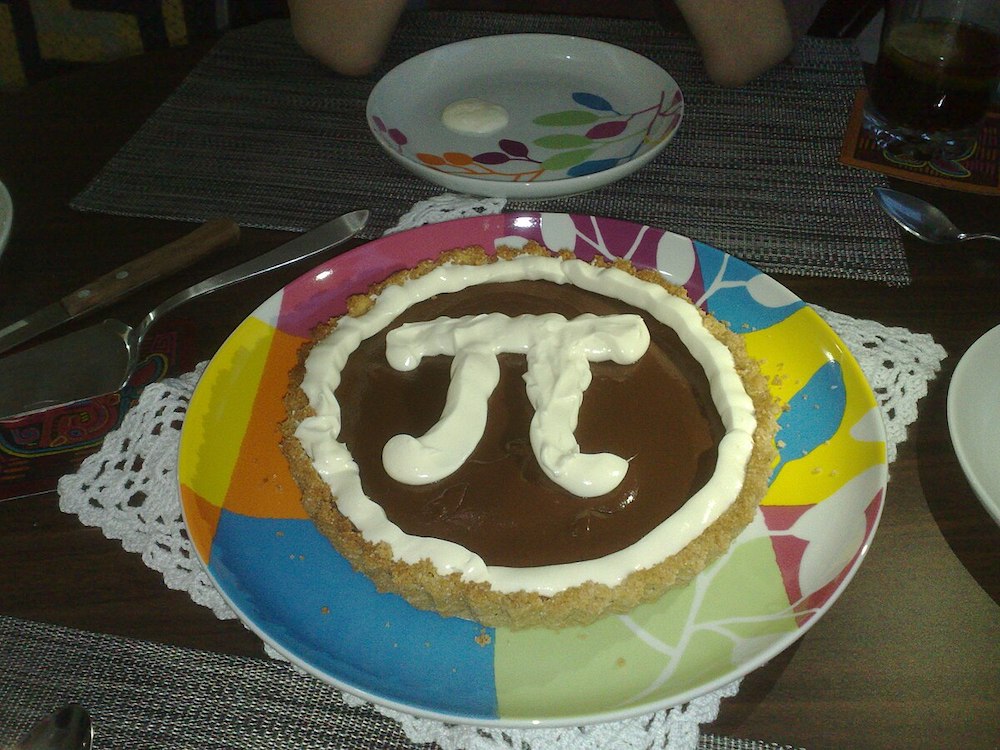Even & Odd: Numbers
“As a former reading tutor at the local elementary school, I taught children as varied as the boy who read WWII as World War Eleven and the girl who correctly multiplied 17 x 38 without pencil or paper, explaining, ‘I have an abacus in my head.’ I’m afraid more of us are related to this young man than his female classmate because, as a nation, we are innumerate by any number of international measures. This is why US tavern ads such as, ‘Buy one beer for the price of two and get the second free’ often work to the owners’ advantage.”—Skip Eisiminger
Skip the B.S.
By Dr. Skip Eisiminger

I “Skip can’t pass a fence/without counting the posts—/the number of things/keeps him engrossed.”—The Wordspinner
CLEMSON South Carolina—(Hubris)—November 2023—The only reason I would eat pie on any given 14 March at 1:59 a.m. and again at 1:59 p.m. is that I love a good pie. (Of course, I’m alluding to pi, the ratio between the circumference of a circle and its diameter, namely 3.14159 ∞). I also love reading about the pi-eating Chudnovsky brothers who built a home computer and calculated pi beyond two billion digits despite the fire risks to their Manhattan apartment building. To the Chudnovskys, pi, the speed limit nature placed on light, the universe’s upper and lower temperature limits, the infinitude of prime numbers, and the Pythagorean theorem (among others) are evidence of God’s infinite mind, for all of these were present long before humans learned of them.
Now if you think my habit of counting fence posts in the back seat of my father’s car makes me compulsive, you are correct, but then many in my family are or were OCD to some degree. But our compulsiveness is trifling compared to whatever seized the mind of Akira Haraguchi of Japan, who has memorized pi to a hundred thousand places. Unfortunately, it takes Mr. Haraguchi 16 hours to demonstrate what he’s learned; thus, I have two questions for him: “How will you feel when you begin to forget what took so long to learn? And, why did you devote so much time to learning something that’s freely available online?”
Of course, Haraguchi’s memory feat is impressive, but it’s light years from what it took one Swiss supercomputer 108 days to extract from pi: a list that if printed ten to the inch would reach from Earth to well beyond Proxima Centauri, our second nearest star. Conceivably, this indestructible strip of pi “paper” might reach 6.3 trillion miles into space, which is 3.8 trillion miles beyond Proxima. Stay tuned because this narrow strip will only grow longer.

II “The school board declared/that pi is three/to rectify/an infelicity,/for in the Bible/pi equals three.”—The Wordspinner
- Start with a granite cylinder whose diameter is one inch but whose cross-sectional area cannot be precisely known because pi is that transcendent number needed in the formula: “area = pi x diameter.”
- Now wrap a titanium wire around the cylinder, pull tight, weld the wire, and then slip it off the cylinder.
- Now place the circle of wire on a smooth wooden plank covered with graph paper larger than the circle.
- Using four square-bodied nails, stretch the wire using the graph paper as a guide to form the square whose area you wish to calculate.
- Now hammer the nails into the plank.
- Once that is complete, measure one side of the square and multiply it by itself.
- The area of your square will equal the area of your circle—it’s as easy as boxing in a ring!
Feel free to notify the Fields Medal committee.
To the fraternal order of Free Masons, the circle, “a square with an infinite number of corners,” squared is a metaphor for “seeing equally in four directions—up, down, in, and out.” This notion appealed so strongly to my morally ambitious father in 1958 that he joined a Masonic lodge in Alexandria, Virgina. But before he was granted his thirty-third and final degree, he had to strip to his underwear, allow himself to be blindfolded, and crawl about on a carpet which in random places delivered electric shocks. When the humiliating ordeal was over, he resigned. If this was the Masons’ idea of “seeing in all directions,” “circling the square and squaring the circle,” he said, he wanted no part of it.
The limestone cornerstone of the administration building at the land-grant (ergo “A & M”) university, where I once taught neither “A” nor “M,” was engraved by an anonymous Free Mason with his belief that construction on the building the stone would anchor was started in the year “5904 A[nno] L[ucis].” The university’s hired Mason derived his date by adding 4,000 years (rounded off from Bishop James Ussher’s biblical date of 4004 BCE) to 1,904 years since the birth of Jesus, or 5,904 years after Anno Lucis, the year the sun first shown. For obvious reasons, this bit of Clemson trivia is overlooked in most of our scientific publications.

III “Pi appears to be created by the gods tossing a pentagonal trapezohedron, a die with ten sides, and they aren’t finished yet.”—The Wordspinner
One of my college sophomores once told me and his classmates that he would not be celebrating Easter because his church (part of a small Baptist sect in the Carolinas) recognized that Jesus did not rise from the dead in “three days and nights.”
“But didn’t he?” I asked incredulously. “He was crucified on Friday and was seen alive on Sunday—Friday, Saturday, Sunday—three days!”
“On the contrary, Professor,” he said. “A day is 24 hours, the creation took 144 hours (6 x 24 or 12 x 12), and Christ was dead only about 40 hours, not 72 as he promised. Easter and the Resurrection, therefore, are a fraud!”
“You, Sir, drive a hard bargain,” I said figuratively. The less literal students in the class thought we should “call it a day,” and, given the late hour, I did.
As a Humanities professor assigned the daunting task of teaching architecture, engineering, and physics majors, I was often demoted from “English major” to “English minor.” In teaching John Keats’ poem La Belle Dame Sans Merci, for example, I once asked students, half in jest, why the narrator shut his beloved’s “wild, wild eyes with kisses four,” not three or less or five or more. When no one hazarded a guess, I said, “The answer is simple. Four is the only honest number. It is spelled with the same number of letters as the number represents, and it’s the only number this is true of.” When a math major asked me if this is so, why does it work in German (vier) but not in French (quatre), I was stumped. “Fair point,” I said and moved rapidly to the odes.

IV “On a Hieroglyph Representing One Million/‘Man in astonishment’/stands for a million,/or is He God/stunned by His illions?”—The Wordspinner
In 1988, at Appalachian State University, a mentally ill man wandered into the school’s woodshop and ran his offending hand through a band saw. He could no longer live with “Satan’s number,” he said, tattooed on his knuckles. Nevertheless, his surgeons reattached it and suggested he see someone with a ruby laser.
“Triple boxcars” or 666 is a famously taboo number though it is used in the Bible about as many innocuous times as it is used noxiously. That number and the practice of “beasting” (discovering, for example, that each of Ronald Wilson Reagan’s names contains six letters) continue to appear in the press and social media in interesting, disturbing, and often comic ways:
- You won’t find 666 leading off anyone’s Social Security number.
- Thanks to church pressure in Poland, bus #666 no longer runs from Warsaw to Hel.
- The mayor of Hell, Michigan once sold one-inch squares of his town for $6.66.
- $666 is a banned bet on Jeopardy.
- The sum of all numbers (1-36) on a roulette wheel is 666.
- When 666 naturally appeared on a canna lily in Anderson, SC in 1981, several ministers pronounced it innocent because the 666 might have been “hhh.”
- DCLXVI is the Roman number of the beast.
- 700666007 is one of several “beastly primes.”
- 6:59 is as close to 6:66 that you’ll see on a digital clock, but to be safe, get up at 7:00.
- 666 is the Area Code of the beast.
- 25.8069758∞, the square root of 666, is as close as humans can approach the square root of evil.
- To the Arabs, 666 is a lucky number.
If any of the items above is troubling, know that it’s all flapdoodle with a side of applesauce. To repurpose the Swiss mathematician Leonhard Euler’s “proof” of God: 666 = (a + bn) / n.

V “Ten ciphers, steel balls/whose turns are caprice,/have reduced Arlene/to grit in the grease.”—The Wordspinner
As a former reading tutor at the local elementary school, I taught children as varied as the boy who read “WWII” as “World War Eleven” and the girl who correctly multiplied 17 x 38 without pencil or paper, explaining, “I have an abacus in my head.” I’m afraid more of us are related to this young man than his female classmate because, as a nation, we are innumerate by any number of international measures. This is why US tavern ads such as, “Buy one beer for the price of two and get the second free” often work to the owners’ advantage. Such ignorance is why many of us think metrification is a Communist plot, and why 500 ml of water mixed with 500 ml of alcohol should equal 1000 ml of a stiff drink.
In 2016, a textbook distributed by the Islamic State Ministry of Education asked elementary-school children: “In one battle, Islamic State heroes numbered 275,220, while coward infidel soldiers numbered 356,230. Which army is greater?” Children who answered, “The infidels, who enjoy an 81,010-man advantage,” were arraigned by the morality police and sent to be re-educated.
For 90 percent of us over 30, there is no algebra or calculus, just business math. As for me, if someone asked me to make “six” odd, I’d say, “Delete the ‘s.’” Innumerate as I am, I’m more interested in “eleven plus two” as an anagram for “twelve plus one.” I won’t say sky-blue mathematics are without value but, like art-for-art’s sake, isn’t it just harmless fun?
At some point, however, we need to accept that random is the pattern or at least part of it, and occasionally “314159” and “0123456789” appear in pi out of that “blue sky.” When eight consecutive eights show up in pi, as they occasionally do, many a nerd’s heart does flutter but, in “doing the math,” my starry-eyed friends in the math department may have discovered, if not invented, the Architect.
The Golden Ratio, the Pythagorean Theorem, the Fibonacci Sequence, and pi are just a few ways the gods say, “Hello, I’m shy but real.” But crediting the gods with arranging the seven stars in the Big Dipper as a signpost leading to Polaris and the way home is just human gullibility. A closer look at Polaris and the Dipper reveals a multitude of stars “pointing” not just north, but in every direction imaginable.

To order copies of Skip Eisiminger’s Letters to the Grandchildren (Clemson University Digital Press), click on the book cover below or contact: Center for Electronic and Digital Publishing, Strode Tower, Box 340522, Clemson SC 29634-0522. For Wordspinner: Mind-Boggling Games for Word Lovers, click on the book cover.




2 Comments
Daniel James Dodson
Thank you Dr.
Thank you for your allusions to God the mathematician storyteller:
THE Source as Scheherazade spouting infinities to God’s Eternal Spouse Shekhinah –
as Shekhinah teasingly mocks the attempt to make both C and D into “integers”
in the impossible-yet-somehow-Present “irrational ratio C/D.”
(cf., God said to God: “Shut up and dance with Me.”)
Skip Eisiminger
Thanks, Daniel,
God said to God: “Shut up and dance with Me.”
“That’s fine,” said God to God, “but one of Us has to do the laundry.”
Skip